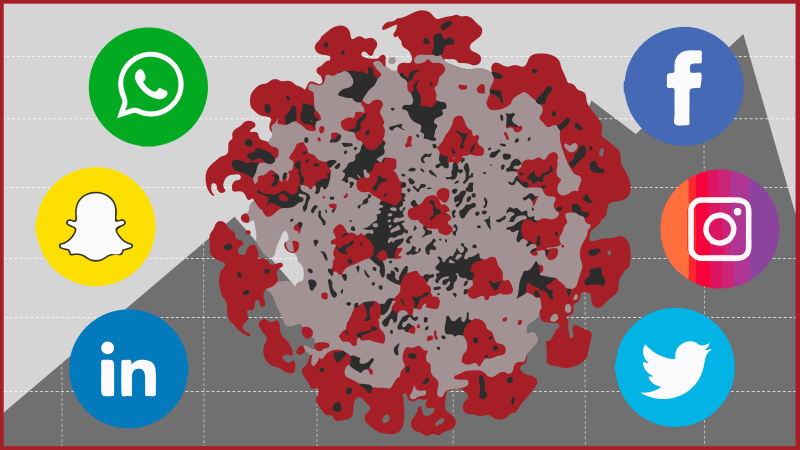This article is the third and final installment in a series examining how classes are responding to COVID-19.
CS 472: “Data Science and AI for COVID-19” allows undergraduate students, graduate students and people around the world to unite in the fight against the novel coronavirus.
The class was designed as a way for students interested in data science and machine learning to use their knowledge for understanding the ongoing pandemic. Assistant professor of biomedical data science James Zou pitched his idea for the class to the computer science department on March 16 — just a few weeks before the quarter began.
“Part of the motivation for offering this class was the demand and interest among data science and CS students to contribute to the effort and to learn about the science behind the pandemic,” Zou told The Daily.
The course, which is offered for two units, features guest speakers that come from a variety of backgrounds, including medical, public health and policymaking. After learning about COVID-19 and ways that it can be addressed, students formed groups to tackle issues ranging from modeling the virus’ transmissibility to identifying misinformation on social media platforms.
Originally, CS 472 was capped at 50 students, but Zou was able to expand the course’s capacity to accommodate 10 additional students.
“We’ve had over 10 really interesting projects that could make a substantial contribution to understanding and modeling COVID-19, which is why we’ve wanted to accommodate as many students as we could,” he said.
CS 472 has garnered interest from not only Stanford students but from “people from every continent,” according to Zou. Because of this, the course staff worked with the School of Engineering to upload video lectures to YouTube to serve as resources for anyone who is interested in the course’s material.
The course’s website, which is also available to the public, provides links to lecture videos, slides and data resources that students can use in their projects. The course’s first lecture had over 100 attendees, according to teaching assistant Irena Fischer-Hwang Ph.D. ’19 M.A. ’20.
Fischer-Hwang is overseeing and mentoring several student projects, including one that has partnered with Roche Genentech, a pharmaceutical company based in Switzerland that has already developed an FDA-approved COVID-19 antibody test.
“What Roche wanted to understand was the rates of demand for their drug, and a proxy for understanding that is predicting hospitalization rates in different countries,” said Veer Shah ’20 M.S. ’21. “Our project aims to do that through a modeling technique that is common in epidemiology called compartmental models.”
Shah and his group members have been meeting with representatives from Roche in order to showcase their findings, which aim to help Roche determine how much of their drug to make and where to allocate it. The drug, actemra, is currently undergoing clinical trials to see if it can be used to treat COVID-19 patients — specifically those with severe inflammatory symptoms.
Shah’s team’s data findings are meant to be available for the general public and other companies to use.
“One of the things that Roche Genentech emphasized is that we only rely on public data so this model can be easily updated based on new trends and used by other people too,” Shah said. “It’s easily exportable and can help general society, not just the company itself.”
First-year medical student Aswini Krishnan is working on a genetic epidemiology project alongside two other first-year medical students, Henry Cousins and Josh Carter, to figure out what makes some strains of COVID-19 spread through the general population further than other strains.
“We’re using information from a phylogenetic tree, which shows how the virus has evolved over time in terms of its genome sequences,” Krishnan said. “We’re using a program to look at the differences in immunogenicity of viral proteins across strains to figure out whether these differences will make the virus more or less likely to propagate and spread to different people.”
Varun Nambikrishnan ’19 M.S. ’20, who has a background in computer science, is working on a group project that is not related to the virus itself, but instead about how information about COVID-19 is spreading on Twitter.
“The main goals of the project are to build a classifier that is able to detect tweets that are likely rumors/misinformation and create a typology of the prevalent rumors we are seeing,” Nambikrishnan said. “To achieve this, we explore various features of the tweets (content, URLs, geo-location, etc.) to see how well they do at detecting rumors using various classification models.”
With the project’s findings, he hopes to better understand what types of rumors about the virus tend to spread and how they have changed over time.
Although the class was initially designed to be a one-time offering because of the “very unique situation” the virus has created, Zou said that he would be willing to offer a similar course in the future if needed.
“I hope that we don’t need to have this class again because I hope that we will be in much better shape a few months or a year from now,” Zou said. “If that isn’t the case by next fall, winter or even next spring, then I will definitely be happy to organize something like this again.”
Contact Camryn Pak at cpak23 ‘at’ stanford.edu.
